- Home
- Graham Hancock
Magicians of the Gods: The Forgotten Wisdom of Earth's Lost Civilization Page 10
Magicians of the Gods: The Forgotten Wisdom of Earth's Lost Civilization Read online
Page 10
2008: Wildfire and abrupt ecosystem disruption on California’s Northern Channel Islands at the Allerod-Younger Dryas Boundary. Evidence for ecosystem disruption at 13,000 to 12,900 years ago on these offshore islands is consistent with the Younger Dryas Boundary cosmic impact hypothesis.24
2009: Shock-synthesized hexagonal diamonds in Younger Dryas Boundary sediments. The presence of shock-synthesized hexagonal and other nanometer-sized diamonds in YDB sediments in association with soot and other wildfire indicators is consistent with a cosmic impact at 12,900 years ago, and the hypothesis that the earth crossed paths with a swarm of comets or carbonaceous chondrites producing airshocks and/or surface impacts that contributed to abrupt ecosystem disruption and megafaunal extinctions in North America.25
2010: Discovery of a nanodiamond-rich layer in the Greenland ice sheet. The presence of rounded nanodiamonds and lonsdaleite in Greenland ice suggests that a large cosmic impact occurred … The existence of this layer … appears consistent with the occurrence of a major impact event that correlates with the nanodiamond-rich YDB in North America at 12,900 years ago.26
2010: Palaeolithic extinctions and the Taurid Complex. Intersection with the debris of a large (50–100 km) short-period comet during the Upper Palaeolithic provides a satisfactory explanation for the catastrophe of celestial origin which has been postulated to have occurred around 12,900 years ago and which presaged a return to Ice Age conditions of about 1,300 years duration. The Taurid Complex appears to be the debris of this erstwhile comet; it includes about 19 of the brightest near-earth objects.27 [N.B. The implications of this important paper by astronomer Bill Napier of the Center for Astrobiology at the University of Cardiff, Wales, UK, will be considered in greater detail in Chapter Nineteen.]
2010: Evidence for a Cosmogenic Origin of fired glaciofluvial beds in the Northwestern Andes: Correlation with Experimentally Heated Quartz and Feldspar. Fired sediment, considered equivalent to the “Black Mat” impact of 12,900 years ago, has been located and analyzed in the Andes of Northwestern Venezuela. The “Black Mat” refers to possible fallout from the Encke Comet airburst presumed to have occurred over the Laurentide Ice Sheet, the impact spreading ejecta over large portions of North America and Europe, making it an interhemispheric event of considerable magnitude … The presence of copious monazite in the carbonaceous coatings is considered part of the incoming ejecta, as it is not a common indicator mineral in the local lithology … The intergrowth of carbonaceous “black mat” material with thermally disrupted and fragmented quartz and feldspar, a “welded” patina of 100–400nm thickness, could only occur with temperatures in excess of 900 degrees centigrade, the event here interpreted to be of cosmogenic origin.28
2011: Framboidal iron oxide: Chondrite-like material from the black mat, Murray Springs, Arizona. At the end of the Pleistocene a Younger Dryas “black mat” was deposited on top of the Pleistocene sediments in many parts of North America. A study of the magnetic fraction from the basal section of the black mat at Murray Springs, AZ, revealed the presence of amorphous iron-oxide framboids in a glassy iron-silica matrix. [Our] data suggest that the observed textures are … due … to a shock event that fractured and largely amorphized the grains … Therefore, we argue that these particles are the product of a hypervelocity impact event.29
2012: Evidence from central Mexico supporting the Younger Dryas extraterrestrial impact hypothesis. We report the discovery in Lake Cuitzeo in central Mexico of a black, carbon-rich lacustrine layer, containing nanodiamonds, microspherules, and other unusual materials that date to the early Younger Dryas … We … find the evidence cannot be explained by any known terrestrial mechanism. It is, however, consistent with the Younger Dryas boundary impact hypothesis postulating a major extraterrestrial impact involving multiple airbursts and/or ground impacts at 12,900 years ago.30
2012: Very high-temperature impact melt products as evidence for cosmic airbursts and impacts 12,900 years ago. We examined sediment sequences from 18 dated Younger Dryas boundary (YDB) sites across three continents … All sites display abundant microspherules in the YDB with none or few above and below. In addition, three sites … display vesicular, high-temperature siliceous scoria-like objects, or SLOs, that match the spherules geochemically … Our observations indicate that YDB objects are similar to material produced in nuclear airbursts, impact crater plumes and cosmic airbursts, and strongly support the hypothesis of multiple cosmic airbursts/impacts at 12,900 years ago. Data presented here require that thermal radiation from air shocks was sufficient to melt surface sediments at temperatures up to or greater than the boiling point of quartz (2,200 degrees centigrade).31
2013: Large Pt anomaly in the Greenland ice core points to a cataclysm at the onset of Younger Dryas. One explanation of the abrupt cooling episode known as the Younger Dryas (YD) is a cosmic impact or airburst at the YD boundary that triggered cooling and resulted in other calamities. We tested the YD impact hypothesis by analyzing ice samples from the Greenland Ice Sheet Project 2 (GISP2) ice core across the Bolling-Allerod/YD boundary for major and trace elements. We found a large platinum (Pt) anomaly at the YDB … Circumstantial evidence hints at an extraterrestrial source … [perhaps] a metal impactor with an unusual composition …32
2013: New Evidence from a Black Mat Site in the Northern Andes Supporting a Cosmic Impact 12,800 years ago. The spherules from Venezuela are morphologically and compositionally identical to YDB spherules documented elsewhere … on three continents, North America, Europe and Asia, confirming the YDB magnetic spherule results of previous researchers. Their microstructural texturing indicates they formed from melting and rapid quenching … Thus the most likely origin of the spherules seems to be by cosmic impact/airburst 12,800 years ago with interhemispheric consequences. The site in Venezuela, along with one in Peru, are the two southernmost sites currently known to display evidence for the YDB impact event, and these sites represent the first evidence that the effects of the impact event extended into South America, even into the Southern Hemisphere.33
2014: Nanodiamond-Rich Layer across Three Continents Consistent with Major Cosmic Impact at 12,800 Cal BP. A major cosmic-impact event has been proposed at the onset of the Younger Dryas cooling episode at 12,800 years (plus or minus 150 years) before the present, forming the Younger Dryas Boundary (YDB) Layer distributed across up to 50 million square kilometers on four continents. In 24 dated stratigraphic sections in 10 countries of the Northern Hemisphere, the YDB layer contains a clearly-defined abundance peak in nanodiamonds (NDs), a major cosmic impact proxy … The large body of evidence now obtained about YDB NDs is strongly consistent with an origin by cosmic impact around 12,800 years ago and is inconsistent with formation of YDB ND by natural terrestrial processes, including wildfires, anthropogenesis, and/or influx of cosmic dust.34 [NB. This paper and its important implications will be discussed in more detail later in this chapter.]
Taking on the dogmatic uniformitarians
One would have thought, with such an impressive accumulation of evidence, that the Younger Dryas impact theory would, by now, be fully accepted and that researchers would have moved on to a broader consideration of the implications of such a recent and hitherto unsuspected global cataclysm for our understanding of the history of the earth and of our own species. However, we’ve already seen from the example of J Harlen Bretz how scientists wedded to the uniformitarian and gradualist reference frame react with extreme negative force to catastrophist theories.
Nor was Bretz an exception. Alfred Wegener, who first proposed the notion of continental drift—plate tectonics—was similarly pilloried, as, subsequently, were Luis and Walter Alvarez (the Chicxulub, “K-T” impact), Steven J. Gould (punctuated equilibrium), Victor Clube and Bill Napier (coherent catastrophism), and James Lovelock, Sherwood Rowland, Mario Molina and Lynn Margulis for their contributions to geophysiology and the Gaia theory. It should come as no surprise, therefore, that Richard Firestone, Allen West, James Kennett and others who h
ave followed the evidence and stuck their necks out to suggest that a comet impact caused the Younger Dryas have also come under sustained and bitter attack.
Indeed the triumphant crowing of critics who clearly believe they have done away, once and for all, with the heretical catastrophism of Firestone, West and Kennett, has filled the academic air several times in the past few years. On each occasion you can almost hear the collective sigh of relief as if to say “thank God; we finally got those bastards”; but then a few months later comes the devastating and absolutely convincing refutation that forces the critics back to the drawing board. This is why eight years of sustained attacks have only served to prove—again and again—that the science behind the theory of the Younger Dryas comet is good.
It’s quite noticeable, reviewing the literature, that academics form themselves into gangs. The ringleaders in the “anti-YD-comet” camp, whose names appear frequently at the top of critical articles, include Mark Boslough, a physicist on the technical staff of Sandia National Laboratories, and Nicholas Pinter, a geology professor at Southern Illinois University. In 2012 they teamed up with half a dozen other scientists to publish a paper entitled “Arguments and Evidence Against a Younger Dryas Impact Event.”35 And a year earlier Pinter and some of the authors of the 2012 attack had joined forces to write a paper hubristically entitled “The Younger Dryas Impact Hypothesis: A Requiem.”36
To paraphrase Mark Twain, reports of the death of the comet theory had been greatly exaggerated.
For example one of the key critiques made by Boslough et al in their 2012 article was that:
Magnetic microspherule abundance results published by the impact proponents have not been reproducible by other workers. Analyses of the same YD site stratigraphy by Surovell et al [2009] could not replicate observations for two of the impact markers published by Firestone et al [2007]. The study by Surovell et al [2009] found no peaks of abundance unique to the YD time interval.37
But the impact proponents were later able to show that Boslough and his co-authors “neglected to cite nine independent spherule studies on two continents that reported finding significant YDB [Younger Dryas Boundary] spherule abundances.”38 More damning, though, was the fact that when other scientists repeated the analysis of Surovell et al, their findings did indeed support an impact. The scientists concluded that:
the inability of Surovell et al to find YDB spherule peaks resulted from not adhering to the prescribed extraction protocol. For example, Surovell et al did not conduct any analyses using scanning electron microscopy, a necessary procedure clearly specified by Firestone et al.39
A separate independent study by Malcolm A. Le Compte et al noted that Surovell et al “collected and analyzed samples from seven YDB sites, purportedly using the same protocol as Firestone et al, but did not find a single spherule in YDB sediments at two previously reported sites.”40 LeCompte et al set out to examine this discrepancy. After a thorough investigation of all the evidence their results cast the work of Surovell et al into an even deeper shadow:
We conducted an independent blind investigation of two sites common to both studies, and a third site investigated only by Surovell et al. We found abundant YDB microspherules at all three widely separated sites consistent with the results of Firestone et al and conclude that the analytical protocol employed by Surovell et al deviated significantly from that of Firestone et al. Morphological and geochemical analysis of YDB spherules suggest they … formed from abrupt melting and quenching of terrestrial materials and … are consistent with … a previously proposed cosmic impact 12,900 years ago …41
Unsurprisingly, after all this, Pinter’s “requiem” for the Younger Dryas impact hypothesis turned out to have been premature:
Pinter et al claimed to have sampled the YDB layer at a location “identical or nearly identical” with the location reported by Kennett et al, as part of three studies that reported finding no YDB spherules or nanodiamonds. However, the published Universal Transverse Mercator coordinates reveal that their purported continuous sequence is actually four discontinuous sections. These locations range in distance from the site investigated by Kennett et al by 7,000 m, 1,600 m, 165 m, and 30 m, clearly showing that they did not sample the YDB site of Kennett et al. Furthermore, this sampling strategy raises questions about whether Pinter et al sampled the YDB at all, and may explain why they were unable to find peaks in YDB magnetic spherules, carbon spherules, or nanodiamonds.42
In 2012–13, in an effort to limit the scope for poor or misleading scholarship to be cited as though it discredits their work—when in fact it does no such thing—Jim Kennett, Richard Firestone, Allen West and a formidable group of pro-impact scientists launched “one of the most comprehensive investigations of spherules ever undertaken.”43 The investigation focused on eighteen sites across North America, Europe and the Middle East (the latter represented by Abu Hureyra in Syria), and conducted more than 700 analyses on spherules using energy dispersive X-ray spectroscopy for chemical analysis and scanning electron microscopy for surface microstructural characterization.
The results, published in PNAS on June 4, 2013, took advantage of recent advances in radiocarbon technology to refine the date of the Younger Dryas impact from 12,900 to 12,800 years ago44 and enabled a much more detailed map of the YDB field to be drawn up, covering close to 50 million square kilometers of North, Central and South America, a large segment of the Atlantic Ocean, and most of Europe, North Africa and the Middle East. Calculations indicate that the impact deposited around ten million tons of spherules across this vast strewnfield.45 Nor was there any doubt in the researchers’ minds that an impact had been at the heart of the matter:
The analyses of 771 YDB objects presented in this paper strongly support a major cosmic impact at 12,800 years ago … Spherules … are (i) widespread at 18 sites on four continents; (ii) display large abundance peaks only at the YD onset at around 12,800 years ago; (iii) are rarely found above or below the YDB, indicating a rare event; and (iv) amount to an estimated 10 million tons of materials distributed across around 50 million square kilometers of several continents, thus precluding a small, local event.46
Despite the annoying ability of the Younger Dryas comet to keep on proving itself, and of its proponents to keep on refuting all attacks, Nicholas Pinter, lead author of the 2011 “Requiem” paper, felt moved in an interview with NBC News in September 2013 once again to attempt to cast the hypothesis into scientific limbo. “My only comment,” he said, “is that the pro-impact literature is, at this point, fringe science being promoted by a single journal.”47
A number of observers with no particular axe of their own to grind were puzzled by this remark. First of all, as National Geographic correspondent Robert Kunzig noted, it smacked a little of wishful thinking, even desperation, on Pinter’s part. “Some opponents of the hypothesis,” wrote Kunzig, “want so badly for it to go away that they have attempted to declare it dead.”48 Secondly, the journal that Pinter accused of promoting fringe science was none other than the revered, utterly mainstream, and extensively peer-reviewed Proceedings of the National Academy of Sciences (PNAS).49 Thirdly, although a number of articles by Kennett, West, Firestone and their team have appeared in PNAS, it is simply not true to suggest that PNAS is promoting their cause. On the contrary, at the time Pinter blurted out his protest to NBC the critics of the YD comet hypothesis had published ten times in PNAS, whereas the proponents of the hypothesis had published there only eight times. Likewise Pinter’s claim that the hypothesis is only being presented in a single journal could hardly be more wrong. By September 2013, in addition to their eight papers in PNAS, proponents had published no less than fifteen papers in thirteen other journals.50
The scholarly fight over the Younger Dryas impact hypothesis is far from over. At the time of writing, the most recent salvo fired by critics of the hypothesis was entitled “Anthropogenic origin of siliceous scoria droplets from Pleistocene and Holocene archaeological sites in northern Syr
ia.” Authored by P. Thy, G. Willcox, G.H. Barfod and D.Q. Fuller, it was published online on December 16, 2014 and in print in January 2015 in the Journal of Archaeological Science.51 The essence of the argument in this paper is that siliceous scoria droplets (composed mostly of glass matrix and bubbles together with partially melted mineral grains) from Abu Hureyra in Syria—cited by pro-impact scientists as evidence for their case—were nothing to do with the comet but were instead a product of ancient buildings destroyed by house fires:
We therefore conclude that melting of building earth in ancient settlements can occur during fires reaching modest temperatures. There is no evidence to suggest that siliceous scoria droplets result from very high temperature melting of soil and are the result of a cosmic event.52
“For the Syria site the impact theory is out,” boasted lead author Peter Thy in a press interview headlined “Study Casts Doubt on Mammoth-Killing Cosmic Impact.”53 But once again it seems the bluster was premature. Allen West is listed as the corresponding author on the majority of scholarly papers published by the team of scientists working on the Younger Dryas impact, so I emailed him on March 18, 2015 to ask if he and his colleagues had any response to the critique by Thy et al. West replied as follows:
We agree with Thy et al that hut fires can produce glass, but it does not follow, therefore, that all glass comes from hut fires, as they conclude. We have analyzed natural glasses supplied by one of the authors of that study, and the 12,800-year-old glass from Syria is only superficially similar. Instead it matches known cosmic impact glass, as well as high-temperature atomic bomb glass.
Most importantly, those authors did not discuss or look for the evidence of abundant high-temperature minerals presented in our previous papers on three sites on two continents (Pennsylvania, South Carolina and Syria) where we found suessite that melts at around 2,300 degrees centigrade and corundum at around 1,800 degrees centigrade. Now we have even stronger evidence from the Syrian site and are working on a new paper to be published this year. The 12,800-year-old Syrian glass contains a range of minerals that melted at extraordinarily high temperatures. See the table below from our new paper:

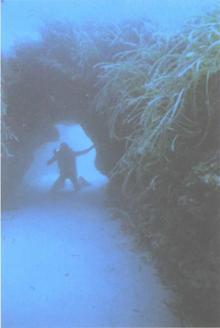 Underworld: The Mysterious Origins of Civilization
Underworld: The Mysterious Origins of Civilization The Master Game: Unmasking the Secret Rulers of the World
The Master Game: Unmasking the Secret Rulers of the World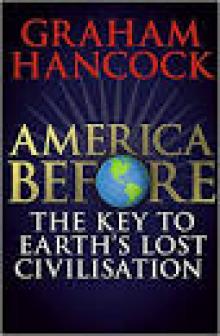 America Before
America Before Entangled
Entangled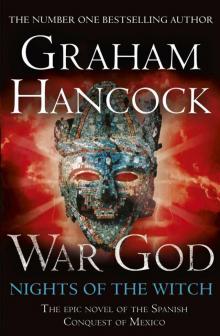 War God: Nights of the Witch
War God: Nights of the Witch War God: Return of the Plumed Serpent
War God: Return of the Plumed Serpent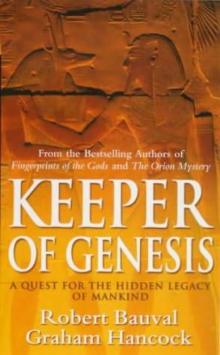 The Message of the Sphinx AKA Keeper of Genesis
The Message of the Sphinx AKA Keeper of Genesis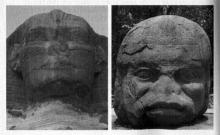 Fingerprints of the Gods
Fingerprints of the Gods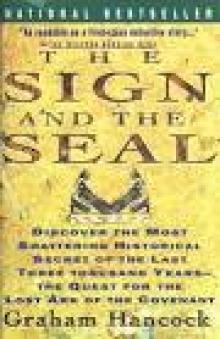 The Sign and the Seal
The Sign and the Seal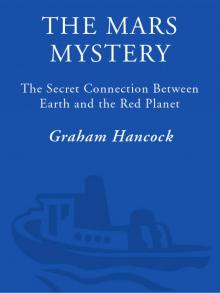 The Mars Mystery: The Secret Connection Between Earth and the Red Planet
The Mars Mystery: The Secret Connection Between Earth and the Red Planet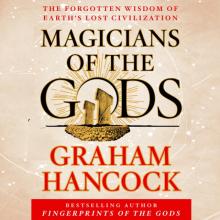 Magicians of the Gods: The Forgotten Wisdom of Earth's Lost Civilization
Magicians of the Gods: The Forgotten Wisdom of Earth's Lost Civilization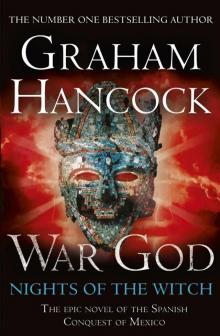 War God
War God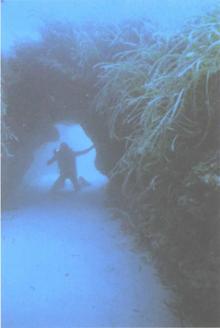 Underworld
Underworld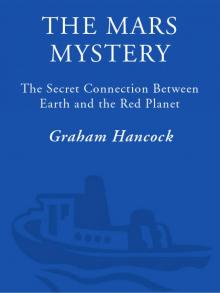 The Mars Mystery
The Mars Mystery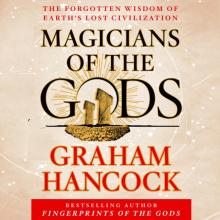 Magicians of the Gods
Magicians of the Gods The Master Game
The Master Game